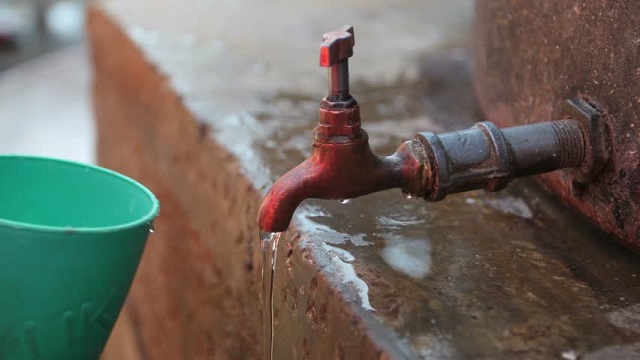
Mexico City, Mexico | AFP | Millions of people in Mexico City were without water on Wednesday, and expected to wait at least four days as authorities undertake maintenance work on one of the major supply systems.
Half of the capital’s eight million population were affected, with a further three million people from the neighboring State of Mexico also impacted.
Mexico City’s water system director, Ramon Aguirre told residents “to take extreme care of the water, don’t wash clothes, bathe using a small bucket.”
“Those with the economic means should buy disposable dishes and cups, take care of water usage,” he added.
School classes were suspended and many residents chose to leave the capital early ahead of Friday’s “Day of the Dead” bank holiday.
Some businesses also decided to give their staff time off starting on Thursday.
Authorities had been preparing citizens for weeks but as residents stockpiled water in anticipation of the supply cut, prices soared.
“A type of psychosis developed,” Aguirre said.
Mexico City is one of the largest metropolises in the world. The supply cut is due to last until Saturday, although the system won’t return to full capacity until November 8.
Maintenance will be carried out on the Cutzamala engineering works that provide part of the city’s water supply from Michoacan state to the west of the capital.
“I had to wait for my two sons to come and help me fill bowls for the bathroom,” Teresa Ortega, 58, who lives in the center of the city, told AFP.
In some of the wealthier neighborhoods, many buildings are equipped with large cisterns that offer residents a water supply that can last several days, minimizing the impact on them.
Shopping malls also have ample reserves but many small restaurants opted to close for the period.
– Nothing new –
Authorities prepared for the huge challenge by employing tanker trucks to supply strategic areas such as hospitals.
In some areas, authorities also installed giant cisterns in case of emergencies, while tanker trucks have been employed in areas where there is a fear of violence breaking out.
“We should not exaggerate the sense of crisis or catastrophe, we must simply prepare ourselves,” Aguirre told reporters.
Some private vehicles were offering water at $83 for 10,000 liters.
For some people, water shortages are nothing new, though.
The Iztapalapa neighborhood, one of the poorest in Mexico City with a population of 1.8 million people, is the worst affected by shortages and many of its citizens are used to receiving their supplies from tanker trucks.
And it’s not confined to that one area, either. Of the 2.5 million homes in the city, almost 569,000 don’t receive water on a daily basis, while 45,950 have no running water at all.
Mexico City’s water tables, built on the swamps of the old Aztec capital Tenochtitlan, have been exploited for decades causing certain areas of the city to sink by between two and 30 centimeters (0.8 to 12 inches) a year.
Some estimates also claim that 40 percent of the city’s water is lost in leaks.
 The Independent Uganda: You get the Truth we Pay the Price
The Independent Uganda: You get the Truth we Pay the Price



